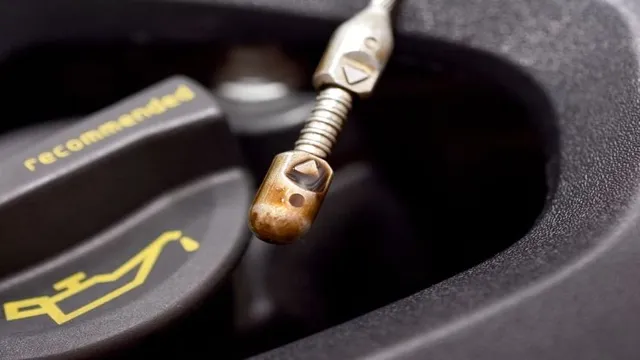Troubleshooting 101: The Ultimate Guide on How to Fix Your DEF Level Sensor
Have you ever noticed that your DEF (diesel exhaust fluid) level sensor has been acting up? It’s a common issue that many diesel vehicle owners face, but luckily, fixing it isn’t as complicated as you might think. In fact, it’s relatively easy to do yourself with a step-by-step guide. Picture your DEF level sensor as a mood ring for your diesel exhaust system.
It’s a crucial part of your vehicle that tells you when your DEF tank needs to be refilled. But like all technology, it can malfunction. Sometimes, it’ll alert you when your DEF level is fine, or worse, it won’t alert you when it’s low.
In either case, you’ll need to figure out how to fix it. In this blog, we’ll be sharing a step-by-step guide on how to fix your DEF level sensor. We’ll be discussing the different reasons why it might malfunction, how to diagnose the problem, and how to fix it.
The best part? You don’t need any prior experience to do it yourself. Whether you’re a seasoned diesel vehicle owner or a beginner, this guide will teach you everything you need to know about fixing your DEF level sensor. So, if you’re tired of guessing when you need to refill your DEF tank or tired of the constant alert reminders, keep reading.
By the end of this guide, you’ll be more knowledgeable and confident in diagnosing and fixing your DEF level sensor issues.
What You’ll Need
If you’re noticing issues with your vehicle’s DEF (diesel exhaust fluid) level sensor, you’ll want to address the problem as soon as possible. A faulty sensor can cause a number of issues, including reduced fuel efficiency and increased emissions. Fortunately, fixing the issue is relatively straightforward.
First, you’ll need to obtain a replacement DEF level sensor that matches your vehicle’s make and model. Additionally, you’ll need basic hand tools such as pliers and a wrench. Before getting started, be sure to disconnect the battery to avoid any electrical shocks.
With the battery disconnected, remove the old sensor and connect the new one following the manufacturer’s instructions. Once the new sensor is installed, reconnect the battery and start up your vehicle. You should notice an immediate improvement in your vehicle’s performance.
With just a few basic tools and a replacement DEF level sensor, you’ll be able to get your vehicle back on the road in no time.
Diagnostic scanner
When it comes to diagnosing issues with your vehicle, a diagnostic scanner is an essential tool. To use a diagnostic scanner, you will need to have a few key items handy. First and foremost, you will need the scanner itself.
These come in a variety of types and models, so it’s essential to choose one that is compatible with your vehicle make and model. Additionally, you’ll need a power source, such as a car battery or a power outlet. Most scanners will also require a connection cable to be plugged into the vehicle’s diagnostic port.
This is generally located under the dashboard on the driver’s side. Finally, you will need a phone or computer to view the diagnostic codes and information that the scanner provides. With these tools at your disposal, you’ll be able to quickly and efficiently diagnose any issues with your vehicle’s engine, transmission, or other systems.
Remember, regular use of a diagnostic scanner can help catch small issues before they become major problems, potentially saving you time, money, and frustration in the long run.

Socket wrench
If you’re looking to work on your car or complete a DIY project around the house, a socket wrench is an essential tool to have on hand. To start, you’ll need a set of socket wrenches in a variety of sizes. The most common socket sizes are ¼ inch, ⅜ inch, and ½ inch.
Another important consideration is the type of socket wrench you need. Ratcheting sockets allow you to tighten bolts and nuts without having to remove the wrench from the bolt after each turn, saving you time and effort. You’ll also want to make sure you have a long enough handle to get the leverage needed to turn stubborn bolts.
Keep in mind that some socket wrenches come with both metric and standard measurements, so choose the one that suits your needs best. With a socket wrench, you can easily tackle any project that requires loosening or tightening bolts or nuts. From fixing your car engine to installing a new light fixture, having the right tools on hand can make any DIY project a breeze.
Wrench set
If you’re planning to start fixing things around your home or car, investing in a wrench set is a must-have. It’s an essential tool that will help you tighten and loosen bolts and nuts with ease. When shopping for a wrench set, you’ll need to consider a variety of factors like the size of the set, the type of wrenches included, the brand, and the price.
A good starting point is to buy a set with combination wrenches, which are versatile and can handle a wide range of tasks. Look for a set that includes both metric and standard measurements, and consider buying a set that comes with a case to keep everything organized. With a good wrench set, you’ll be able to tackle a wide range of DIY projects, from fixing your bike to installing a new kitchen faucet.
So why wait? Get your hands on a quality wrench set today and start fixing things like a pro!
Identifying the Problem
If you’re experiencing problems with a faulty DEF level sensor, you’re not alone. This issue is relatively common amongst diesel vehicle owners. Fortunately, fixing a DEF level sensor is relatively straightforward.
The first thing you’ll need to do is identify the problem. You can usually tell that your DEF level sensor isn’t functioning correctly if your check engine light is on, or if your diesel exhaust fluid level seems off. You may also notice that your vehicle is experiencing reduced power or that it’s unable to start.
Once you’ve identified the issue, you can begin to troubleshoot the problem. Common fixes may include cleaning the sensor, checking for loose wires or connections, or even replacing the sensor altogether. It’s important to note that a faulty DEF level sensor can have serious consequences for your vehicle, so it’s crucial to address the issue as soon as possible.
By following these steps and enlisting the help of a qualified mechanic if needed, you can get your DEF level sensor back to optimal functioning in no time.
Symptoms of a faulty DEF level sensor
If you have a diesel-powered vehicle with a diesel exhaust fluid (DEF) system, you may encounter issues with your DEF level sensor from time to time. It’s essential to be aware of the telltale signs of a faulty DEF level sensor to prevent any damage or failure to your vehicle’s emission system. One of the most apparent symptoms of a problematic DEF level sensor is the warning light illuminating on your vehicle’s dashboard.
This light alerts you to a problem with your DEF system and prompts you to get it checked as soon as possible. Another sign to watch out for is your vehicle entering limp mode, which limits its speed and power. In some cases, you may also notice your vehicle consuming DEF at a higher rate than usual.
If you notice any of these issues, it’s best to take your vehicle to a qualified mechanic or dealer to diagnose and fix the problem quickly. Remember, ignoring a faulty DEF level sensor can cause more significant issues with your vehicle’s emission system in the long term.
Checking fault codes with diagnostic scanner
When faced with car problems, the first step is identifying the problem, which can be done with the help of a diagnostic scanner and fault codes. Fault codes are essentially error messages that indicate what’s wrong with the vehicle, and a diagnostic scanner can read these codes and provide insight into what’s causing the issue. From there, it’s up to the mechanic or car owner to figure out what needs to be done to fix the problem.
For example, if the fault code indicates that there’s an issue with the oxygen sensor, the mechanic will know to check and potentially replace that component. By using a diagnostic scanner to check fault codes, car owners can save time and money by identifying the issue upfront and avoiding expensive trial-and-error repairs. So, if your car is acting up, consider using a diagnostic scanner to check the fault codes and get to the root of the problem.
Replacing the Sensor
If you are facing issues with your DEF level sensor, it might be time to replace it. Replacing the DEF level sensor is a simple task that can be done by anyone with some basic knowledge of vehicles. Before starting, make sure you have a replacement sensor that is compatible with your vehicle.
Locate the sensor under the hood, usually located near the DEF tank. To remove the old sensor, disconnect the wiring harness and loosen the mounting screws. Take the old sensor out and replace it with the new one by securing it with screws and reconnecting the wiring harness.
Finally, test the sensor to make sure it is working correctly. With these simple steps, you should be able to fix your DEF level sensor in no time. Remember to always follow safety precautions and use appropriate tools when working with your vehicle.
Locating the sensor and removing it
If you’re experiencing issues with your sensor, whether it’s a malfunction or a complete failure, it’s important to replace it as soon as possible. Locating the sensor depends on the type of sensor and its location in your device, but a quick check in the user manual should give you the necessary information. Once you’ve found the sensor, you’ll need to carefully remove it, taking care not to damage any surrounding components.
In most cases, you’ll need a screwdriver or a set of pliers to safely remove the old sensor. Once it’s removed, you can insert the new sensor in its place, ensuring it’s properly connected to the device. Before powering up your device again, double-check that the sensor is securely in place and that there are no other components that need to be adjusted before powering up.
Overall, replacing a sensor may seem daunting, but with the right tools and information, it can be a simple and quick process.
Installing the new sensor
To replace a malfunctioning sensor, the first step is to ensure that you have the right replacement sensor. Once you have the new part, switch off the power to the system and disconnect the sensor. Depending on the system, this may involve unscrewing the sensor or removing the cover plate from the device.
Always refer to the manufacturer’s instructions for specific details regarding your system. Once the old sensor is removed, connect the new sensor and secure it in place. Be sure not to overtighten screws or connections, as this can damage the sensor or its wiring.
Once everything is securely in place, restore power to the system and test the new sensor to ensure that it is working correctly. By following these steps, you can easily install a new sensor and get your system back up and running in no time.
Calibrating the sensor
If you’re experiencing issues with your sensor, it may be time to replace it. While calibrating the sensor is a common fix, if the issue persists, it’s best to replace the sensor entirely. First, make sure to order the appropriate replacement sensor for your specific device.
Once you have the replacement, power off your device and unplug it from any electrical source. Next, locate the sensor and carefully remove it from its placement. Keep in mind that some sensors may require specific tools for removal.
Once the old sensor is out, insert the new one and secure it in place. Power the device back on and test the new sensor to ensure it is working correctly. With a new sensor in place, you’ll likely see an improvement in device accuracy and function.
Testing the Sensor
If you’re experiencing issues with your DEF level sensor, you’ll want to start by testing the sensor to identify any problems. The first step is to check the wiring connections to ensure they’re secure and not corroded. Next, you’ll want to test the sensor using a digital multimeter to check for continuity and resistance.
If the readings aren’t within the appropriate range, the sensor may be faulty and in need of replacement. It’s also worth noting that DEF level sensors can be sensitive and may fail even if they appear to be in good condition. So if you’re having issues with your DEF level readings, it’s important to test the sensor rather than assuming it’s working properly.
By taking the time to properly diagnose and fix any issues with your DEF level sensor, you’ll be able to ensure your vehicle is running as efficiently and reliably as possible.
Verifying proper installation and operation
After successfully installing your sensor in its designated location, it’s important to verify its proper installation and operation by testing it. This will help ensure that your sensor is accurately measuring the data it was designed to collect. To test the sensor, you can simulate the conditions in which it will be used in order to confirm that it is functioning properly.
For example, if your sensor measures temperature, you can place it in a high-temperature environment to check its accuracy. Additionally, you can compare the sensor’s readings with those gathered by another device to ensure that they are consistent. If you detect any issues during testing, it is best to consult the manufacturer’s manual or seek assistance from a professional to avoid any further complications or malfunctions.
Remember, proper testing will help you obtain the most accurate data possible, ensuring that your sensor is functioning as intended and providing you with reliable results.
Final Thoughts
If you’re experiencing issues with your diesel exhaust fluid (DEF) level sensor, don’t worry – it’s a common problem that can be easily fixed. The DEF level sensor is responsible for monitoring the amount of fluid in your vehicle’s DEF tank and alerting you when it’s running low. However, if the sensor is faulty or damaged, it can cause false readings or prevent the warning light from activating.
To fix this issue, start by checking the wiring and connections between the sensor and the vehicle’s computer. If they’re in good condition, it’s likely that the sensor itself needs to be replaced. You can purchase a replacement DEF level sensor online or through your local auto parts store and install it yourself using simple hand tools.
Remember to clear any error codes from the computer system after installing the new sensor to ensure that it functions properly. With these easy steps, you’ll be back on the road in no time with a fully-functioning DEF level sensor.
Conclusion
Well folks, fixing a DEF level sensor is no joke, but with a little patience and know-how, you can get back on the road to clean emissions and clear skies. Just remember to check your connections, replace any faulty parts, and double-check your work before hitting the highway. And always keep in mind the wise words of one famous mechanic: ‘If you can’t fix it with duct tape or a hammer, it’s probably an electrical problem.
‘ Happy wrenching!”
FAQs
What is a def level sensor?
A def level sensor is a component in a diesel engine that determines the level of DEF (diesel exhaust fluid) in the vehicle’s tank.
Why is my def level sensor not working properly?
There could be various reasons why your def level sensor is not working properly, such as a faulty sensor, wiring issues, or a clogged DEF tank.
How can I diagnose a problem with my def level sensor?
You can diagnose a problem with your def level sensor by checking the sensor’s electrical connections, checking the wiring for any damage, or using a diagnostic tool to read the sensor’s data.
How can I fix my def level sensor?
You can fix your def level sensor by replacing a faulty sensor, repairing any wiring issues, or cleaning out a clogged DEF tank. In some cases, the sensor may need to be recalibrated or reprogrammed by a professional mechanic.
Can a faulty def level sensor cause other problems in my diesel vehicle?
Yes, a faulty def level sensor can cause other problems in your diesel vehicle, such as decreased engine performance, increased emissions, and potential damage to the engine. Therefore, it is crucial to address any issues with your def level sensor as soon as possible.





